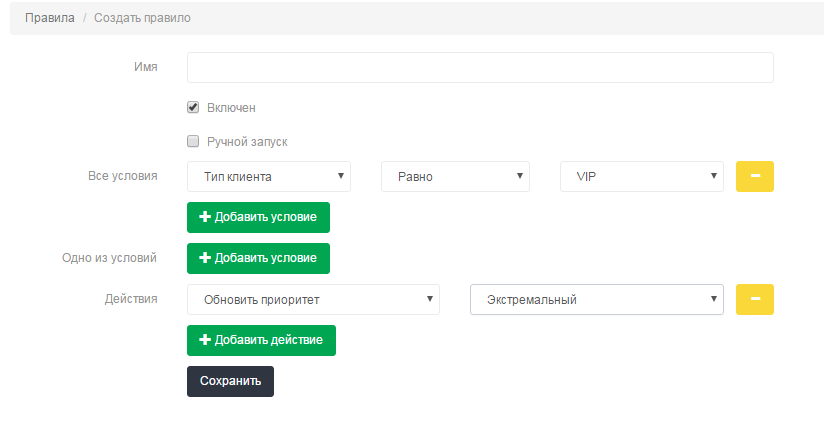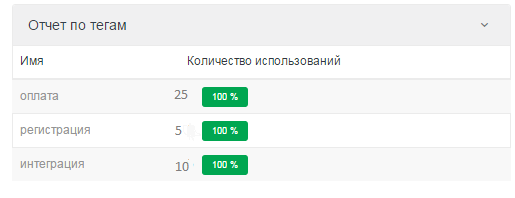Destroy the call queue. Part 2
We continue to talk about how to deal with the queue of e-mail calls. The previous time we discussed the sorting of calls and priority, the distribution of the team and the appointment of the responsible. Today we give three comments on each of these processes.
One of the options for sorting calls is customer value for the company. Investors with a million or holders of credit cards, regular or new customers, users with a “start” or “enterprise” tariff.
Those who pay more rely on privileges and do not want to wait.
The easiest way is to mark clients in the system and assign their calls a high priority in the general queue. This is suitable if the “special” accounts for no more than N% of the team’s time. If extremely urgent calls began to crowd waiting for a response, create queue 2.0. and to process it, select a group of employees. To simplify the task of separating the grains from the chaff, immediately give the “special” customers a different e-mail.

MailChimp, for example, went a step further: they provide email support only to paying users. For those who are in the trial or use the Starting Up tariff, there is a cool documentation with clear navigation and video, which is enough to start. Advanced users have advanced questions - and MailChimp calmly focuses on them.
Operational support without waiting can be a source of additional revenue. Think about how to directly relate the cost of your services and the speed of support.
When it comes to SLA, and you reduce the time of the first response, try to split the command: let the part process new requests, and others deal with the old ones. At the same time, the attention of the first group is focused on simple issues that are resolved in a couple of seconds. As soon as a complex request is encountered and the agent hangs over it, it transfers it to another group. This approach kills two birds with one stone:
It remains to decide by what principle to select agents in each group. The first option: agents draw lots and periodically change roles - suitable for small teams up to 15 people with approximately the same agent skills. Larger teams, with a lot of work, do this: beginners sit on light template queries, while old people deal with difficulties. This helps motivate newcomers and prevents experienced employees from getting bored with the routine.
Customer problems are not always resolved on the first line of support. For financial or technical issues, you need the help of colleagues from other departments. And the closer the first support line with the second, the happier the client.
Let's look at a simple interaction scheme, when an appeal is transferred from an external queue to an internal one: a queue of “hold-up” requests that require additional investigation. The client has not received a transfer from you and wants to clarify the details where you sent the money.
In this process, it is important that the support monitor the request sent to colleagues, and the accounting department respond promptly. Thanks to internal comments in Usedesk, the agent communicates with colleagues right there in the request, without going to another system or mail. Accounting will receive a notification immediately as soon as a request is assigned to them. We change the status “on hold” to send the request to the queue for processing. In order not to forget about the request, we set up the rule: in a day, if colleagues do not give a comment, a reminder will come to the support. Bookkeeping will add a comment, change the status of the person in charge, so that the request again “moves” to the support.

Thus, when several departments are working on a request, it is important not to lose control and keep a history of changes. At any moment you need to see at what stage the decision is and who is responsible.
After examining and testing these approaches , take a little from each to create an effective process for managing the queue. First, try working with an unoccupied queue, processing requests from old to new. So the team gets the same load, and the customers respond in an honest queue in time. Then start experimenting with filters and labels. Usedesk will show if the number of queries with a specific topic has increased. This will help to understand that it is time to separate these appeals in a separate queue. Once you find out what generates the largest volume of queries, add or update the knowledge base. Now that you have reduced the queue down to the most important requests, feel free to optimize. Determine which tickets to decide first and distribute to the team.

The only right decision on how to form and process the queue does not exist. It is enough for someone to hire new people, someone on the contrary decides to get rid of loafers, automates processes and redistributes the load. Experiment and find a way that suits your product, your team, and most importantly, your customers. Gow share in the comments how you handle the queue.
1. Thieves out of turn!
One of the options for sorting calls is customer value for the company. Investors with a million or holders of credit cards, regular or new customers, users with a “start” or “enterprise” tariff.
Those who pay more rely on privileges and do not want to wait.
The easiest way is to mark clients in the system and assign their calls a high priority in the general queue. This is suitable if the “special” accounts for no more than N% of the team’s time. If extremely urgent calls began to crowd waiting for a response, create queue 2.0. and to process it, select a group of employees. To simplify the task of separating the grains from the chaff, immediately give the “special” customers a different e-mail.

MailChimp, for example, went a step further: they provide email support only to paying users. For those who are in the trial or use the Starting Up tariff, there is a cool documentation with clear navigation and video, which is enough to start. Advanced users have advanced questions - and MailChimp calmly focuses on them.
Operational support without waiting can be a source of additional revenue. Think about how to directly relate the cost of your services and the speed of support.
2. New-simple and old-complex
When it comes to SLA, and you reduce the time of the first response, try to split the command: let the part process new requests, and others deal with the old ones. At the same time, the attention of the first group is focused on simple issues that are resolved in a couple of seconds. As soon as a complex request is encountered and the agent hangs over it, it transfers it to another group. This approach kills two birds with one stone:
- some users are delighted with instant answers
- the line is reduced and the morale of the team is enhanced
It remains to decide by what principle to select agents in each group. The first option: agents draw lots and periodically change roles - suitable for small teams up to 15 people with approximately the same agent skills. Larger teams, with a lot of work, do this: beginners sit on light template queries, while old people deal with difficulties. This helps motivate newcomers and prevents experienced employees from getting bored with the routine.
3. Branch of tasks
Customer problems are not always resolved on the first line of support. For financial or technical issues, you need the help of colleagues from other departments. And the closer the first support line with the second, the happier the client.
Let's look at a simple interaction scheme, when an appeal is transferred from an external queue to an internal one: a queue of “hold-up” requests that require additional investigation. The client has not received a transfer from you and wants to clarify the details where you sent the money.
- Support accepts the appeal.
- Creates a separate thread for discussion with the accounting department.
- Accounting gives comments.
- Support sends a response to the client.
In this process, it is important that the support monitor the request sent to colleagues, and the accounting department respond promptly. Thanks to internal comments in Usedesk, the agent communicates with colleagues right there in the request, without going to another system or mail. Accounting will receive a notification immediately as soon as a request is assigned to them. We change the status “on hold” to send the request to the queue for processing. In order not to forget about the request, we set up the rule: in a day, if colleagues do not give a comment, a reminder will come to the support. Bookkeeping will add a comment, change the status of the person in charge, so that the request again “moves” to the support.

Thus, when several departments are working on a request, it is important not to lose control and keep a history of changes. At any moment you need to see at what stage the decision is and who is responsible.
Process Combination
After examining and testing these approaches , take a little from each to create an effective process for managing the queue. First, try working with an unoccupied queue, processing requests from old to new. So the team gets the same load, and the customers respond in an honest queue in time. Then start experimenting with filters and labels. Usedesk will show if the number of queries with a specific topic has increased. This will help to understand that it is time to separate these appeals in a separate queue. Once you find out what generates the largest volume of queries, add or update the knowledge base. Now that you have reduced the queue down to the most important requests, feel free to optimize. Determine which tickets to decide first and distribute to the team.

The only right decision on how to form and process the queue does not exist. It is enough for someone to hire new people, someone on the contrary decides to get rid of loafers, automates processes and redistributes the load. Experiment and find a way that suits your product, your team, and most importantly, your customers. Gow share in the comments how you handle the queue.
